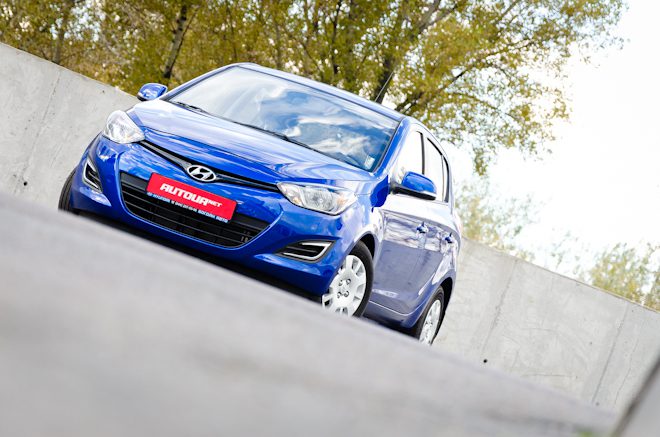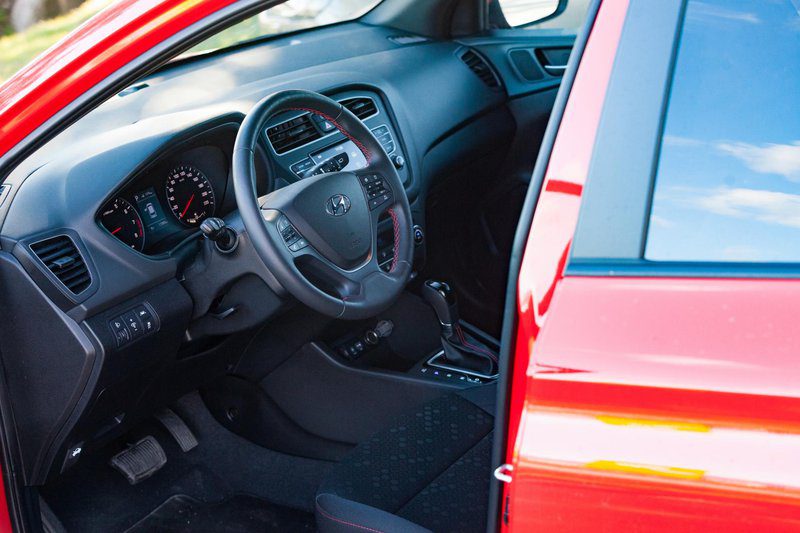
Quick test: Hyundai i20 1.0 TGDi (2019) // Quick test: Hyundai i20 is a Korean outsider
When Hyundai unveiled the refreshed B-segment last summer, model i20 we first set out to find body changes. With our hand on our heart, we had to place it next to its predecessor, but as soon as we did that, we just grabbed onto its head. When they both stand next to each other like that, they are obvious at first glance, and there are not so few of them. However, the purpose of the Hyundai update was not only to modernize the car's appearance, much more attention was paid to the technical side of the car, the engine assembly, which we also paid the most attention to.
Hidden under the hood of the test car is the weaker of the two newcomers to the motor line, liter turbocharged three-cylinder engine with a capacity of 100 "horsepower" or 73,6 kilowattswritten using modern modules. It was connected to the wheels via a seven-speed dual-clutch automatic transmission; a combination that many years ago seemed completely meaningless, unnecessary; no one would even think of her. But times change, and so does that.
The above combination quickly surprises. Despite the small engine size and automatic transmission, the car is very agile and responsive, especially in the city center, whether you shift yourself when changing gears or trust this automation task. It is clear that there are even faster gearboxes, as well as much slower ones, and as long as we avoid really aggressive acceleration (dynamic driving does not cause any problems), you will not notice the gear change. The satisfaction, especially with the engine, continues on the track, where it is so necessary to forget to quickly overtake the car in front. Small three-cylinder engines have their limitations. But the fact that even on steep descents you can not only follow the traffic, but also without the slightest difficulty to do it in the highest gear, confirms the fact that the i20 is quite a worthy passenger on all types of roads.
In terms of driving, the i20 is commendable (the chassis and fuel consumption are solid enough. 5,7 liters on a normal circle quite acceptable, and with aggressive driving it can reach up to eight liters), and the interior leaves a bitter aftertaste. The leather (and not too thick) steering wheel feels good to the touch, but on the monochrome plastic of the test car it quickly gets lost. This completely closes all the doors, and it is also extremely difficult. The monotony is thus broken by a reliable, user-friendly infotainment system that requires only a little getting used to the radio control system.

After the update, the Hyundai i20 received a package of auxiliary systems called Smart Sense, among which we paid the most attention to the system for preventing unintentional lane change. It constantly monitors and corrects the direction of movement of the vehicle, which makes it work imperceptibly, but effective, and on the other hand, it is caused by standing water on the road, which can cause problems with recognizing the markings on the road.
Overall, the i20 is definitely one of the more interesting players in the smaller car class, ruled by Renault Clio, Volkswagen Polo, Ford Fiesta (and we could list more). People who invest a lot in a tidy interior will blow their nose because of its cockpit, while everyone else who doesn't worry too much about it and the badge on the bonnet will be offered a fully competitive package that can surprise in many areas. positive direction.